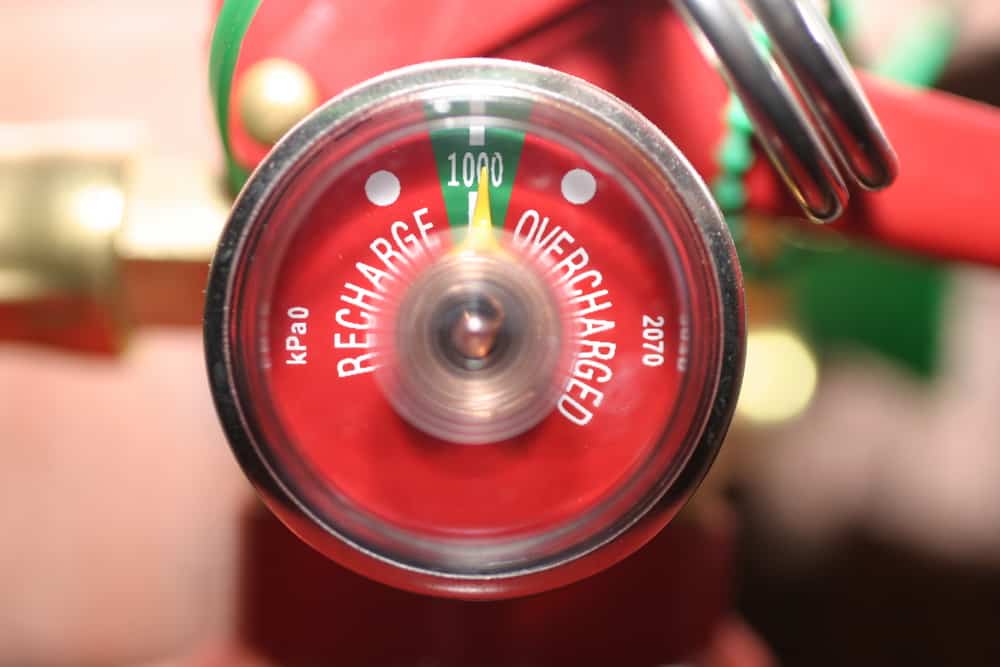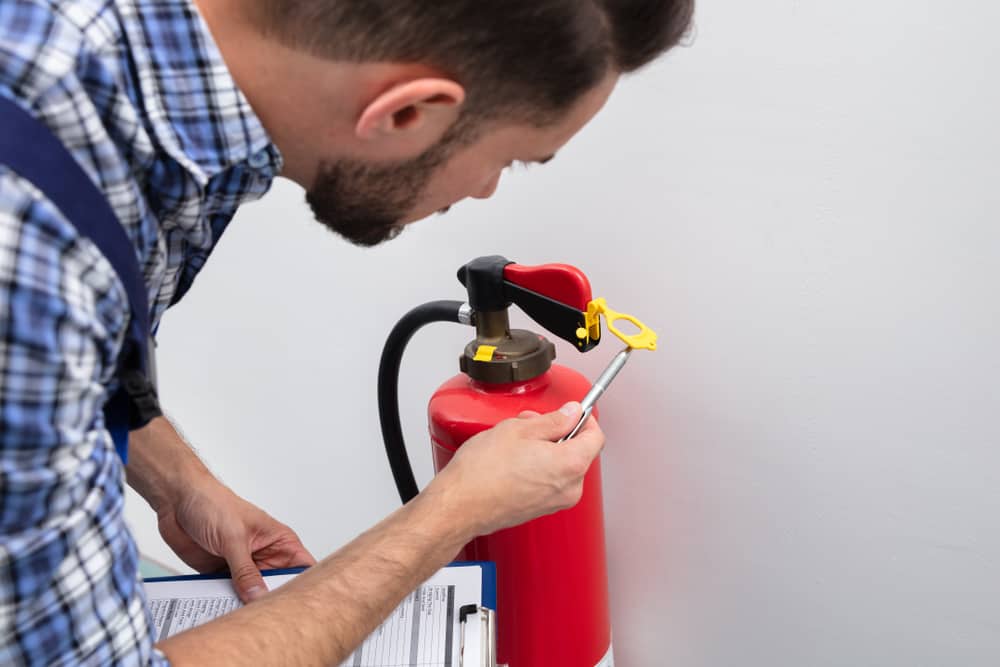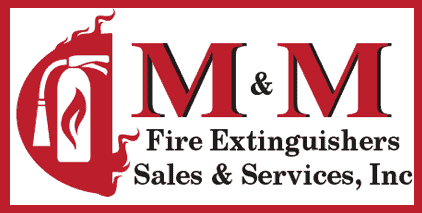
Why Your Fire Extinguisher May Need a Recharge in Nassau County, NY
October 22, 2025
Don’t Replace It! Get Fire Extinguisher Repair in Suffolk County, NY
November 6, 2025Your fire extinguisher looked fine last month. Now you’re staring at a pressure gauge in the red zone, wondering how this happened and what it means for your Nassau County business. Fire extinguisher problems don’t announce themselves with fanfare—they develop quietly until an inspection reveals the issue or, worse, until you need the equipment during an emergency. You’ll discover the warning signs that signal trouble, understand why these problems occur, and learn how our professional repair services can restore your fire safety equipment to full compliance.
Most Common Fire Extinguisher Problems in Nassau County Businesses
Fire extinguisher problems in Nassau County follow predictable patterns, often stemming from environmental factors and inadequate maintenance. Pressure loss tops the list, leaving extinguishers unable to discharge properly when needed most. Seal deterioration comes next, allowing extinguishing agents to leak slowly over time.
Corrosion affects units exposed to moisture or harsh conditions, particularly in basement storage areas or near kitchen equipment. Physical damage from impacts or improper handling can compromise the cylinder integrity. These issues don’t just affect performance—they create immediate FDNY compliance violations that can cost your business hundreds of dollars per unit.
Pressure Loss and Gauge Problems
When your fire extinguisher’s pressure gauge drops into the red zone, you’re looking at the most common problem affecting Nassau County businesses. Pressure loss happens gradually through microscopic leaks in seals, valves, or the cylinder itself. Temperature fluctuations in unheated storage areas accelerate this process, causing metal components to expand and contract repeatedly.
The gauge itself can fail, showing incorrect readings that mask underlying problems. A gauge stuck in the green zone might give false confidence while the actual pressure has dropped dangerously low. This deception proves particularly problematic during FDNY inspections, where officials test actual pressure regardless of gauge readings.
Our professional repair involves depressurizing the unit, inspecting all components, replacing worn seals, and recharging with fresh extinguishing agent. The process includes pressure testing to ensure the cylinder can handle operating pressure safely. We also replace faulty gauges and verify accurate readings before returning the unit to service.
Some businesses attempt DIY pressure checks, but this approach carries significant risks. Pressurized cylinders require specialized equipment and training to handle safely. Improper handling can result in dangerous explosions or exposure to extinguishing chemicals. Our professional repair services have the tools, training, and insurance coverage necessary to perform these repairs safely and effectively.
Seal and Valve Component Failures
Fire extinguisher seals and valves represent the most vulnerable components in your fire safety system. These rubber and metal parts face constant pressure while exposed to temperature variations, humidity, and chemical degradation over time. When seals fail, you’ll notice powder residue around the discharge area or a gradual pressure drop over several months.
Valve problems manifest differently depending on the failure type. Stuck valves won’t open during discharge, rendering the extinguisher useless during emergencies. Leaking valves allow pressure to escape continuously, eventually leaving the unit completely depressurized. Corroded valve threads can make removal impossible without damaging the cylinder.
O-rings and gaskets deteriorate predictably based on age and environmental exposure. Heat accelerates this process, which explains why kitchen-area extinguishers fail more frequently than units in climate-controlled offices. Cold temperatures make rubber components brittle, leading to cracking and failure during pressure changes.
Our professional seal replacement involves complete disassembly, inspection of all components, and replacement with manufacturer-approved parts. We apply proper torque specifications during reassembly to prevent over-tightening that could damage threads or under-tightening that allows leaks. The repair process includes pressure testing to verify seal integrity before the unit returns to service.
Quality seal replacement extends extinguisher life significantly while ensuring reliable performance during emergencies. Attempting seal replacement without proper tools and training often results in additional damage, making our professional repair the most cost-effective solution for Nassau County businesses.
Professional Fire Extinguisher Repair Process
Our professional fire extinguisher repair follows strict protocols designed to restore equipment to factory specifications while ensuring user safety. The process begins with comprehensive inspection to identify all problems, not just obvious symptoms. We document findings and provide detailed repair estimates before beginning work.
Repair work takes place in certified facilities equipped with specialized tools and testing equipment. Every repaired unit undergoes rigorous testing to verify proper operation before returning to service. This systematic approach ensures repairs meet FDNY requirements and provide reliable performance when needed most.
Inspection and Diagnosis Procedures
Proper fire extinguisher diagnosis requires more than checking the pressure gauge. Our professional technicians perform systematic inspections covering every component that affects performance and safety. The process starts with external examination for physical damage, corrosion, or signs of previous repairs that might compromise integrity.
Internal inspection involves carefully depressurizing the unit and removing the valve assembly. We examine the cylinder interior for corrosion, contamination, or structural damage. We test valve operation, inspect seals and gaskets, and verify that all components meet current safety standards.
Hydrostatic testing determines whether the cylinder can safely contain operating pressure. This process involves filling the cylinder with water and pressurizing it to test levels that exceed normal operating pressure. Any cylinder that fails hydrostatic testing must be retired immediately, as continued use poses serious safety risks.
Documentation plays a crucial role in our professional diagnosis. We record all findings, including measurements, test results, and photographic evidence when necessary. This documentation supports repair recommendations and provides valuable information for future maintenance planning.
Our diagnosis process also includes checking compliance with current FDNY regulations. Fire safety codes evolve over time, and older extinguishers might require upgrades to meet current standards. Our professional technicians stay current with these requirements and can recommend appropriate modifications during the repair process.
Repair, Testing, and Certification Standards
Our fire extinguisher repair work meets strict industry standards to ensure safety and compliance. We maintain certification from recognized organizations and follow manufacturer specifications for all components and procedures. This certification process involves regular audits and continuing education to stay current with evolving standards.
Component replacement uses only approved parts that match or exceed original specifications. We maintain detailed records of part sources, lot numbers, and installation dates. This traceability proves essential during warranty claims or compliance audits by FDNY officials.
Our testing procedures verify that repaired extinguishers perform correctly under actual operating conditions. Pressure testing confirms that all seals and connections can withstand operating pressure without leaking. Discharge testing ensures proper flow rates and pattern formation. These tests simulate emergency conditions to verify reliable performance when needed most.
Certification involves affixing proper tags and labels that document the repair work performed. These tags include repair dates, technician identification, and next service due dates. FDNY regulations specify exact tag requirements, and only certified repair facilities can obtain and apply these official tags.
Our quality control measures include final inspection by senior technicians who verify that all work meets standards. Repaired units receive new instruction labels and safety information to ensure proper use. The completed repair package includes documentation that proves compliance with all applicable regulations and standards.
We also maintain insurance coverage that protects customers in the unlikely event that repaired equipment fails to perform properly. This protection provides additional peace of mind for Nassau County businesses that depend on fire extinguishers for safety and compliance.
Reliable Fire Extinguisher Repair Solutions for Nassau County
Fire extinguisher problems don’t have to compromise your Nassau County business safety or compliance status. Understanding common issues like pressure loss, seal failures, and component deterioration helps you identify problems early, before they become costly violations or safety hazards.
Our professional repair services restore your equipment to factory specifications while ensuring compliance with current FDNY regulations. The investment in proper repair pays dividends through extended equipment life, reliable emergency performance, and peace of mind that comes with knowing your fire safety system works when needed most.
When fire extinguisher problems arise in your Nassau County facility, M&M Fire Extinguishers Sales & Services, Inc. provides the expertise and service quality you need to restore safety and compliance quickly and effectively.




